ISO 9001:2015 Clause 8 Operation – Planning and Controlling Processes for Quality Products and Services
Introduction
Understanding ISO 9001 Clause 8, Operational Planning and Control, is crucial for business success. This core section focuses on how to manage your daily processes to ensure quality products and services are consistently delivered. It covers everything from defining and reviewing customer requirements to establishing controls for your production and service provision. You will learn to plan work effectively, control changes, and manage outsourced processes and external providers to ensure every output meets the highest standards. By mastering Clause 8, you build a robust operational framework that ensures you not only meet all your customer needs but also drive efficiency and continuous improvement.
For expert assistance in implementing these critical requirements and achieving your ISO Certification, partner with Maxicert, a trusted provider committed to your long-term success.
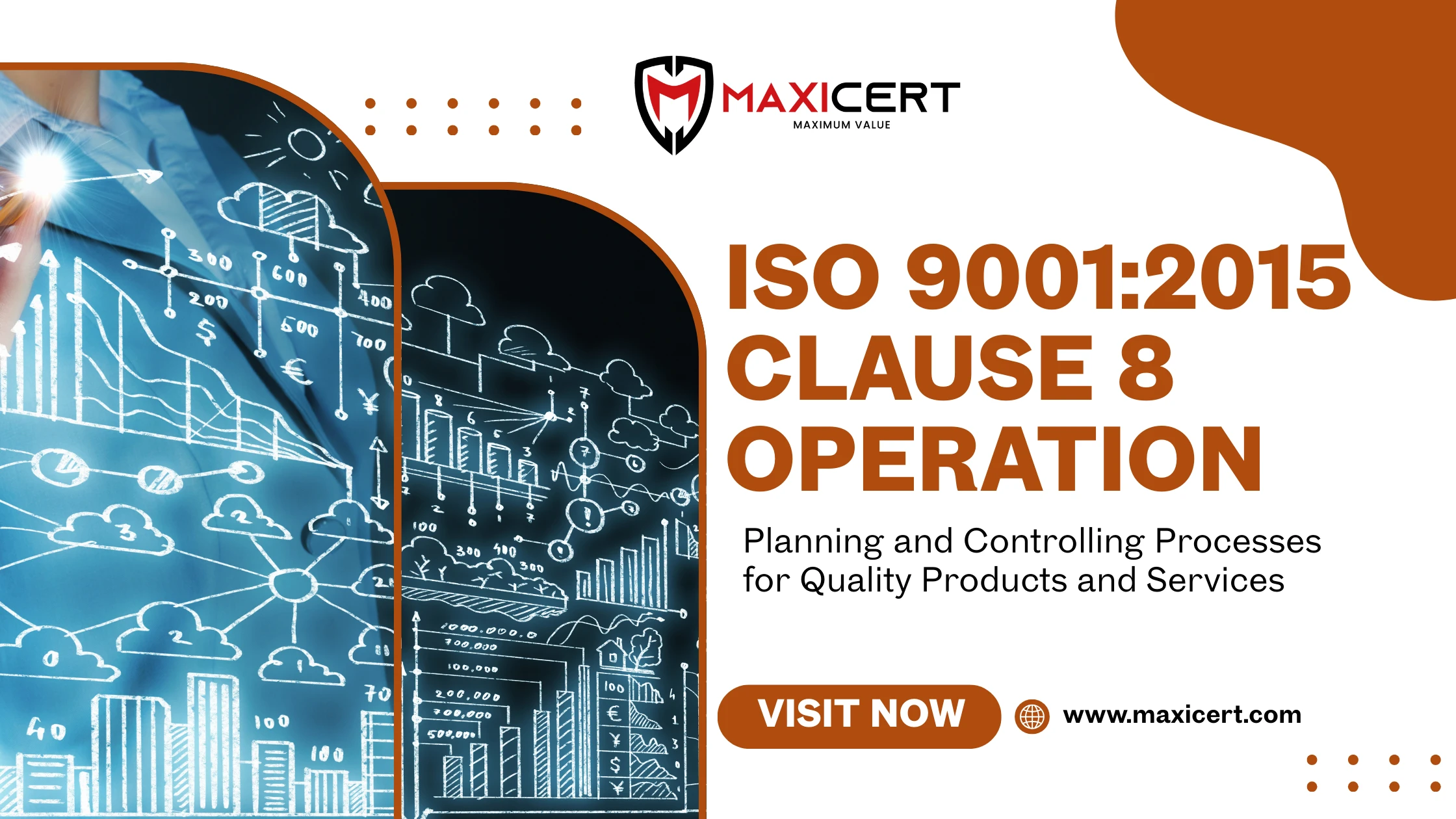
8.1 Operational Planning and Control
The organization shall plan, implement and control the processes (see 4.4) needed to meet the requirements for the provision of products and services, and to implement the actions determined in Clause 6 by:
a) determining the requirements for the products and services,
b) establishing criteria for:
- the processes;
- the acceptance of products and services,
c) determining the resources needed to achieve conformity to the product and service requirements;
d) implementing control of the processes in accordance with the criteria,
e) determining, maintaining and retaining documented information to the extent necessary: - to have confidence that the processes have been carried out as planned,
- to demonstrate the conformity of products and services to their requirements.
The output of this planning shall be suitable for the organization’s operations.
The organization shall control planned changes and review the consequences of unintended changes, taking action to mitigate any adverse effects, as necessary.
The organization shall ensure that outsourced processes are controlled (see 8.4).
Intent of Operational Planning and Control
The intent of the clause on Operational planning and control is to specify the requirements that need to be implemented in the organization’s operations to make sure the Management System Standard requirements are fulfilled, and the priority risks and opportunities are being addressed.
Operational control includes the methods implemented to make sure business operations, activities or equipment do not exceed specified conditions or performance standards or violate regulatory compliance limits, and thereby effectively achieve the intended outcome of the Management System.
These controls establish technical requirements necessary to achieve the desired optimal functionality for business processes, such as technical specifications or operating parameters or a prescribed methodology or agreed service requirements.
ISO 9001:2015 Clause Guide Panel
- Clause 1
- Clause 2
- Clause 3
- Clause 4 – Sub-clause 1
- Clause 4 – Sub-clause 2
- Clause 5 – Sub-clause 1
- Clause 5 – Sub-clause 2
- Clause 5 – Sub-clause 3
- Clause 6 – Sub-clause 1
- Clause 6 – Sub-clause 2
- Clause 7 – Sub-clause 1
- Clause 7 – Sub-clause 2
- Clause 7 – Sub-clause 3
- Clause 7 – Sub-clause 4
- Clause 8 – Sub-clause 1
- Clause 8 – Sub-clause 2
- Clause 8 – Sub-clause 3
- Clause 8 – Sub-clause 4
- Clause 8 – Sub-clause 5
- Clause 8 – Sub-clause 6
- Clause 8 – Sub-clause 7
- Clause 8 – Sub-clause 8
- Clause 8 – Sub-clause 9
- Clause 8 – Sub-clause 10
- Clause 8 – Sub-clause 11
- Clause 8 – Sub-clause 12
- Clause 9 – Sub-clause 1
- Clause 9 – Sub-clause 2
- Clause 9 – Sub-clause 3
- Clause 9 – Sub-clause 4
- Clause 10
When Operational Control Is Required
Operational control is required for situations related to business processes where absence of controls could lead to:
- deviations from the policy and objectives, or
- unacceptable risk.
These situations can be related to:
- business operations, activities or processes,
- production, installation or servicing,
- maintenance,
- contractors, suppliers or vendors.
The degree of control exercised will vary depending on many factors, including:
- the functions performed,
- their importance or complexity,
- the potential consequences of deviation of variability, or
- the technical competency involved versus what is available.
Documentation in Operational Planning
Documentation in operational planning ensures that processes are carried out as planned, with changes and failures managed effectively. This provides confidence that products and services conform to requirements and builds a history of organizational knowledge.
- Documented Information: Records are maintained to provide confidence that operational control processes have been carried out as planned.
- Quality Planning: The output of planning processes can be a formal quality plan for product or service delivery.
- Managing Changes: Potential changes must be identified, and their risks and impacts assessed using risk-based thinking.
- Responding to Failure: When operational controls fail, immediate action is necessary to address any negative effects.
Outsourced Processes
An organization may decide to source the provision of products and services externally due to lack of expertise or for economic reasons.
The risks associated with this should be considered and actions taken to address these risks, 8.4 provides further information on the type and level of control that may be required in order to address any identified risks with this approach.
Tactical Nature of Operational Planning
Operational planning can be more detailed than the planning done in 6.1 and at the tactical level focused on the business operations in support of those actions determined in Actions to address risks and opportunities (6.1).
The Organization needs to plan how all the activities necessary for product realization/service provision are going to happen.
Some examples are:
- to consider the customer requirements (see 8.2),
- to make a budget, purchase machinery, undertake production/service provision planning, establish work instructions,
- to review design plans, and
- to determine what documented information is to be retained (e.g. final inspection reports).
All this planning information should be documented to the extent needed for the Organization to ensure the successful completion of processes.
Extent of Operational Planning
The extent of product realization and service provision planning depends on whether the products and services that the Organization provides are:
- of a repetitive nature,
- project oriented,
- of an innovative nature, or
- a combination of the above.
Where only routine and highly repetitive product or service is involved, planning may be carried out in general organizational documents.
Subsequent reference to associated documentation could then be sufficient to meet the planning requirements, particularly in relation to quality objectives.
If this approach is adopted, the Organization will need to review all such documentation at planned intervals or after any process changes to ensure it is still adequate.
If the nature of the Organization does not lend itself to the routine approach described above, it might need separate planning for each new order or project. In other cases, it might only be appropriate where there are non-routine products or services.
Tools for Effective Operational Control
There are several tools, and related competence, that an Organization could determine necessary to ensure an effective and efficient fulfilment of clause 8.1.
Although it is an Organization’s decision on how the output of the planning process is recorded, in order to effectively and consistently plan and control the operations, a formal Quality Plan could be necessary.
For complex activities, elaborate and detailed plans could be more appropriate.
It might need to list, in the Quality Plan:
- the Operations,
- the verification stages,
- verification criteria the Organization needs to meet, and
- the records that should be generated.
It might be necessary to list the identification and allocation of resources that could be required.
References and Supporting Standards:
- ISO 10005 provides guidelines for quality plans.
- ISO 31000 (Risk management – Principles and guidelines) provides support and guidance for risk management.
- ISO 10014 (Quality management – Guidelines for realizing financial and economic benefits).
Application for Service Organizations
Compared with manufacturing, clause 8.1 might deserve some further consideration when applied in a Service Organization.
- Service is the result of at least one activity necessarily performed at the interface between the provider and the customer, therefore in operational planning and control for services the Organization should consider the presence of the customer during the service provision, and related risks and opportunities.
As applicable:
- such risks should include the risks for safety, as a critical customer requirement.
- the opportunities should include the possibility to immediately adapt, customize and improve the service due to the possibility to have “real time” feedback from the customer.
Since a service is intangible, for some kinds of service it could be difficult to establish criteria for the provision process and for acceptance.
The Four Stages of ISO 9001 Clause 8
Plan
- Determine requirements for products and services.
- Establish criteria for processes and product acceptance.
- Identify all necessary resources.
Implement & Produce
- Carry out processes according to the established criteria.
- Produce your product or deliver your service as planned.
Control
- Manage planned changes and review unintended ones.
- Control outsourced processes and external providers.
- Ensure all outputs meet acceptance criteria.
Document & Improve
- Maintain documentation to prove processes were followed.
- Retain records to show conformity.
- Use this data for analysis and continuous improvement.
Service-Specific Challenges
Compared with manufacturing, it might be impossible to verify a service output before its delivery to the customer.
In such cases, the Organization should stress the validation of the service process, as considered in ISO 9001:2015 clause 8.5.1 g.
For example, in the transport services and logistics field, when an Organization needs to design and develop a service, this implies determining and planning directly the service provision process.
- In such cases there might be an overlap between Service Planning (clause 8.1) and Service Design & Development (clause 8.3).
- Therefore, clause 8.3 could be partially fulfilled through conformity to 8.1 (for more details on Services Design & Development, see the guidance on clause 8.3).
Conclusion
In short, ISO 9001’s Clause 8 is all about making sure your day-to-day work is well-planned and controlled. It covers every operational step, from determining customer requirements and managing design and development to ensuring consistent production and service delivery. By following these practical steps, you can not only consistently create great products and services but also proactively handle any issues that arise, building lasting customer trust and satisfaction. This clause is the engine of your quality system that turns plans into real-world results.
For expert guidance on implementing these crucial operational requirements and achieving ISO certification, partner with Maxicert.
Free 60–90 day implementation plan available after consultation.
FAQ
What is the main purpose of ISO 9001 Clause 8.1?
The purpose is to ensure day-to-day operations are planned and controlled. This means setting criteria for processes and products to ensure work meets requirements.
How does operational planning (Clause 8.1) differ from strategic planning (Clause 6)?
Clause 6 is strategic (top-level risks). Clause 8.1 is tactical, focusing on the daily plans and controls needed to meet requirements.
What does ISO 9001 require for controlling outsourced processes?
Outsourced processes must be controlled. The level of control needed depends on the complexity and risks of the activity.
How does ISO 9001 Clause 8 apply to service-based organizations?
It requires planning for customer interaction and managing risks. Because services are often intangible, it emphasizes validating the process itself, not just the final output.
Client Testimonials
What Our Clients Say About Us?
We are trusted by thousands of clients belonging from technology, manufacturing, healthcare and various sectors
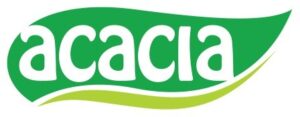

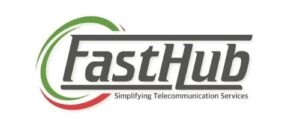

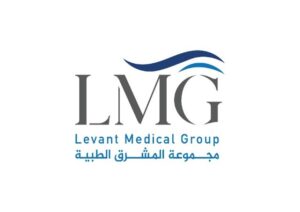


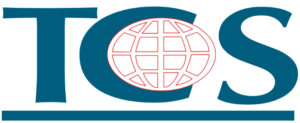
Our overall experience with Maxicert was satisfied. The audit and consulting part was handled carefully, we fulfilled our client requirement of ISO 27001 hassle free.
Kevin Santiago BDM – Clarks Outsourcing, PhilippinesTimely response and knowledge of ISO standards can be seen together in the team of Maxicert, we grow because of the service providers like Maxicert.
Samuel Christopher Quality Assurance Head – OEQA, NigeriaWe did Food safety certification with Maxicert, the service was extraordinary and their consultant had good experience of the subject.
Mr. Venkatesh Production Manager - Acacia Foods and Beverages, ZambiaWe engaged a consultant of Maxicert for our business certification, we now have a well-designed and organized department procedures and we rectify our errors through internal audits regularly.
Abdullah Al Rayes Managing Director – TCS, BahrainTechnical expertise by the team of Maxicert helped us achieving our ISO 13485 certificates, we now proudly say that we have achieved our target, all thanks to the team.
Nady Boustany CEO – LMG, IraqMaxiCert's approach to meet our needs proved instrumental in facilitating a seamless transition throughout the entire ISO certification process for us. Their training sessions are so much helpful.
Ms. Latifa Al Salem Investor portfolio – Ministry of Investment, Saudi ArabiaMaxicert is a one stop solution, we got trainings, documents, audit and certification at one place, they facilitated everything.
Ms. Mariam Chaggama VP – Fasthub, Tanzania





Their presence in Oman made us even better to accomplish our goal of achieving ISO certificates on time, we will definitely recommend their services.
Mr. Sailesh Mohanakrishnan Division Manager – Khimji Ramdas, Oman